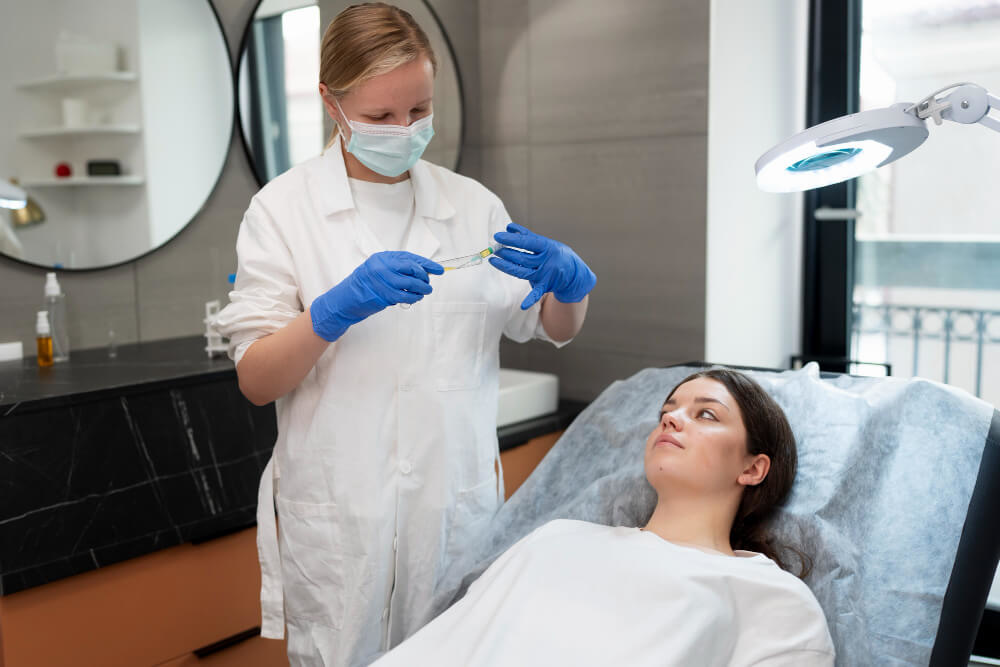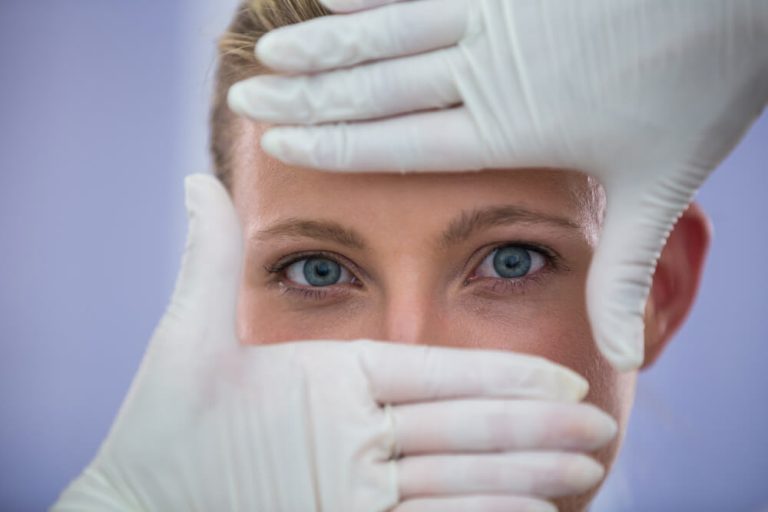The Future of Health: Why Preventative Care Training is Reshaping Medicine
We have been conditioned to think about our health in a specific way. We feel a strange ache, a persistent cough, or a sudden pain, and only then do we schedule a visit to the doctor. For generations, medicine has largely operated on this reactive model, a system designed to fix problems after they have already appeared. It’s a framework of diagnosis and treatment, of responding to sickness rather than cultivating wellness.
But what if we could change the entire paradigm? What if, instead of waiting for illness to strike, we focused on building a foundation of health so robust that many diseases never get a chance to take hold? This is the powerful promise of preventative care, a forward-thinking approach that is quietly revolutionizing the healthcare landscape. At the heart of this transformation is a new focus on preventative care training, which equips medical professionals with the tools to become architects of long-term health, not just repairers of acute problems.
This shift is about moving the goalposts from simply treating disease to actively promoting a long and vibrant life. It’s about understanding the root causes of chronic conditions and intervening early, often years or even decades before symptoms would normally appear. This proactive stance requires a different kind of medical education, one that prioritizes lifestyle, advanced diagnostics, and a deep partnership between doctor and patient to optimize human potential.

What Exactly Is Preventative Care?
At its core, preventative care is a collection of health services and strategies designed to help you stay healthy and avoid getting sick in the first place. It is not a single action but a continuous process, a philosophy of health management that unfolds throughout a person’s life. To understand it better, experts often break it down into three distinct categories.
First is primary prevention. This is what most people think of when they hear the term. It involves taking steps to prevent a disease or injury from ever occurring. Classic examples include vaccinations that protect against infectious diseases, counseling on healthy habits like diet and exercise, and policies that encourage public health, such as smoking bans. Primary prevention is about building a shield before the battle even begins.
Next comes secondary prevention. This level focuses on detecting a disease in its earliest, most manageable stages, often before any symptoms are noticeable. The goal is to catch a problem early to slow or halt its progression. Common examples include routine cancer screenings like mammograms and colonoscopies, regular blood pressure checks to catch hypertension, and blood tests to identify high cholesterol or prediabetes. It’s the early warning system of modern medicine.
Finally, there is tertiary prevention. This applies to individuals who already have an established disease or chronic condition. The objective here is not to cure the disease but to manage it effectively, prevent complications, and improve quality of life. This could involve a cardiac rehabilitation program for someone who has had a heart attack, diabetic foot care to prevent ulcers, or patient education to help someone with asthma manage their condition. Tertiary prevention is about minimizing the impact of an existing health issue.

Why Has Preventative Care Become So Important?
The urgency and focus on preventative care have grown dramatically in recent decades, driven by a confluence of factors that have exposed the limitations of a purely reactive medical system. One of the most significant drivers is the global epidemic of chronic, non-communicable diseases. Conditions like heart disease, type 2 diabetes, certain cancers, and respiratory illnesses are now the leading causes of death and disability worldwide.
These are not diseases that appear overnight. They are often the result of years, or even decades, of exposure to risk factors, many of which are related to lifestyle. Poor nutrition, a sedentary lifestyle, chronic stress, and inadequate sleep are major contributors. A reactive system that only intervenes when a patient has a heart attack or a diabetic crisis is incredibly expensive and often too late to reverse the underlying damage. Preventative care offers a more effective and sustainable solution by addressing the root causes.
Furthermore, there is a growing societal desire for not just a longer lifespan, but a longer ‘healthspan’. People no longer want to simply live to an old age; they want to live those years in good health, free from disability and full of vitality. This focus on longevity and quality of life has fueled interest in strategies that go beyond treating sickness, delving into the science of optimizing human performance and slowing the aging process.
The economic argument is also incredibly compelling. Treating chronic diseases consumes an enormous portion of healthcare budgets globally. By investing in prevention, healthcare systems can reduce the number of people who develop these costly conditions, leading to significant long-term savings. It is a classic case of an ounce of prevention being worth a pound of cure, both for individual wellbeing and for the economic health of a nation.

How Does Preventative Care Training Equip Healthcare Professionals?
Traditional medical training has historically been centered on pharmacology and surgery, the essential tools for treating established diseases. While critically important, this focus can leave practitioners less prepared to guide patients through the nuances of lifestyle modification and early-stage intervention. Specialized preventative care training fills this crucial gap, providing a comprehensive toolkit for building health from the ground up.
This training reorients the medical professional’s perspective, turning them into a health coach and partner in addition to a diagnostician. It emphasizes understanding the patient as a whole person, considering their genetics, environment, and lifestyle choices as interconnected parts of their health puzzle. This holistic approach empowers clinicians to create truly personalized health plans that are both effective and sustainable for the long term.

What Core Skills Are Taught?
The curriculum of advanced preventative medicine is multifaceted. A major component is lifestyle medicine, which involves a deep dive into the pillars of health. Clinicians learn the intricate science behind nutrition, exercise physiology, sleep hygiene, and stress management. They are trained to translate this complex information into practical, actionable advice that patients can integrate into their daily lives.
Another critical skill set involves advanced diagnostics. This goes far beyond a standard cholesterol panel. Training includes the interpretation of comprehensive biomarker analysis, genomic testing to identify genetic predispositions, and assessments of metabolic health and hormonal balance. These tools provide a high-definition picture of a patient’s current health status and future risks, allowing for incredibly precise and early interventions.
Perhaps one of the most vital skills is in patient communication and coaching. It is one thing to tell a patient they need to change their habits; it is another thing entirely to inspire and empower them to do so. This is why specialized motivational interviewing training for healthcare professionals is so crucial. It teaches clinicians how to have collaborative conversations that tap into a patient’s own motivations for change, dramatically increasing the likelihood of long-term success.

How Is Technology Changing the Game?
Technology is a powerful ally in the preventative care movement. The rise of wearable devices like smartwatches, fitness trackers, and continuous glucose monitors provides a continuous stream of real-world health data. Clinicians trained in preventative care learn how to interpret this data, moving beyond simple step counts to identify trends in sleep quality, heart rate variability, and metabolic responses to food.
This data allows for a level of personalization that was previously unimaginable. A doctor can see exactly how a patient’s body responds to a specific meal or exercise routine, enabling them to fine-tune their recommendations with incredible precision. This bio-feedback loop also empowers patients, making them active participants in their own health journey.
Telehealth has also been a game-changer, making preventative care more accessible. Regular check-ins and coaching sessions can be conducted remotely, providing continuous support without the need for frequent office visits. This ongoing relationship helps keep patients engaged and accountable, fostering the small, consistent changes that lead to profound long-term health benefits. Artificial intelligence is also beginning to play a role, helping to analyze complex data sets to predict disease risk and identify patterns that a human observer might miss.

What are some specialized areas of advanced training?
As the field of preventative medicine matures, so too do the opportunities for specialization. Healthcare professionals can now pursue continuing education that focuses on specific, high-impact areas of prevention. Many choose to enroll in comprehensive CME courses on advanced preventative care to stay on the cutting edge of diagnostics, therapies, and lifestyle protocols.
One significant area of focus is the management of metabolic health and obesity, which are root causes of many chronic diseases. The standard advice of ‘eat less, move more’ is often insufficient for individuals with complex metabolic dysregulation. To address this, clinicians can pursue an advanced course on pharmacotherapy for obesity, learning how to integrate new and effective medications with lifestyle interventions to achieve sustainable weight loss and metabolic healing. This specialized knowledge is critical for tackling one of the biggest health challenges of our time.

What is the Role of Regenerative Medicine in Prevention?
While lifestyle medicine and early diagnostics form the foundation of preventative care, a new frontier is emerging that promises to take prevention to an entirely new level: regenerative medicine. This cutting-edge field of science is focused on a truly remarkable goal, to repair, replace, or regenerate human cells, tissues, or organs to restore normal function. Instead of just managing symptoms or slowing disease, it aims to heal from within.
From a preventative standpoint, the implications are staggering. Imagine being able to repair the cellular damage that leads to arthritis before the joint becomes painful and inflamed. Or consider regenerating insulin-producing cells in the pancreas to prevent the onset of type 2 diabetes. This is the ultimate form of proactive medicine, addressing the biological breakdown at its source.
This field represents a convergence of biology, engineering, and medicine, and it is rapidly moving from theoretical science to clinical application. It offers hope for addressing some of the most challenging conditions associated with aging and chronic disease, fundamentally changing our understanding of what is possible in healthcare. For those interested in the foundational science, the International Society for Stem Cell Research is a leading global organization that provides information and fosters collaboration in this dynamic field.

What are the key approaches in regenerative medicine?
Regenerative medicine is not a single therapy but a broad category of advanced treatments. One of the most well-known approaches involves stem cell therapy. Stem cells are unique because they have the potential to develop into many different types of cells in the body. Scientists are exploring how to guide these cells to repair damaged heart muscle after a heart attack, replace neurons lost in neurodegenerative diseases, or rebuild cartilage in worn-out joints.
Another powerful approach lies in gene and cell therapies. These therapies work at the most fundamental level of our biology. Gene therapy seeks to correct or replace faulty genes that cause disease, offering the potential for a one-time cure for certain inherited disorders. The American Society of Gene & Cell Therapy serves as a primary resource for professionals and the public on the progress of these transformative treatments.
Tissue engineering is a third major pillar. This involves combining cells, engineering principles, and special materials to grow new tissues and organs in the laboratory. While growing a complex organ like a heart is still a long-term goal, scientists have already had success growing simpler tissues like skin, cartilage, and blood vessels for transplantation. This could one day eliminate the need for organ donors and the risk of immune rejection.

Where can I learn more about these cutting-edge fields?
The world of regenerative medicine is complex and evolving quickly. For anyone seeking a reliable and easy-to-understand overview of the different therapies and what they entail, a great starting point is the information provided by MedlinePlus, a service of the National Library of Medicine. It offers clear explanations of the core concepts and links to the latest research.
For those who want to see where the leading-edge academic research is happening, institutions like Stanford University are at the forefront. Exploring the work of the Stanford Medicine’s Regenerative Medicine program provides a fascinating glimpse into the future, showcasing the projects and discoveries that are paving the way for the clinical treatments of tomorrow. These resources highlight how the field is moving from a futuristic concept to a tangible part of modern healthcare.

How Can You, as a Patient, Benefit from This Shift?
The rise of preventative care empowers you to take a more active role in your long-term health than ever before. It shifts the dynamic from being a passive recipient of care to an active partner with your healthcare provider. The first step is to adopt a proactive mindset. Instead of waiting for problems, start thinking about your health goals. Do you want more energy, better sleep, or to reduce your risk of a family-related health condition?
Start a conversation with your doctor during your next visit. Ask them about their approach to preventative health. You can ask questions like, ‘Beyond standard tests, what can we do to get a better picture of my long-term health risks?’ or ‘What are the most impactful lifestyle changes I can make for my specific health profile?’. Their answers will give you a good sense of whether their practice is aligned with a preventative philosophy.
Seek out practitioners who have specific training in functional, preventative, or longevity medicine. These clinicians are more likely to have the tools and time to perform a deep dive into your health and co-create a personalized plan with you. They see you not just as a collection of symptoms, but as a whole person with unique goals and challenges.
Most importantly, recognize that you are the CEO of your own health. Your daily choices regarding what you eat, how you move, how you sleep, and how you manage stress have a more profound impact on your long-term wellness than any medical procedure. A preventative-focused clinician acts as your expert consultant, providing the data, guidance, and support you need to make the best decisions for your body and your future.

What Does the Future of Healthcare Look Like?
The future of healthcare, shaped by the principles of preventative care training, will be profoundly different from the system we know today. It will be defined by what experts call the ‘4 Ps’: Predictive, Preventative, Personalized, and Participatory. It will be a system designed not just to extend life, but to enhance the quality of that life from beginning to end.
‘Predictive’ means using advanced tools like genomics and AI to identify your individual risk for specific diseases long before they manifest. ‘Preventative’ means using that predictive information to implement targeted lifestyle, nutritional, and medical strategies to stop those diseases from ever developing.
‘Personalized’ means that healthcare will no longer be one-size-fits-all. Your health plan will be tailored to your unique biology, lifestyle, and environment. ‘Participatory’ means that you, the patient, will be at the center of your health journey, equipped with data from wearables and supported by a health team that acts as your coach and partner.
In this future, the annual physical will transform from a routine check of basic metrics into a comprehensive strategic health review. It will be a time to analyze your data, celebrate your progress, and adjust your long-term plan for a vibrant, healthy, and long life. This is the inspiring vision that preventative care is turning into a reality, one well-trained clinician and one empowered patient at a time.
Frequently Asked Questions

How does supervising a health coach affect my medical liability?
Properly trained supervising physicians can effectively mitigate liability risks by ensuring health coaches operate strictly within their defined scope of practice. The physician remains the ultimate clinical authority responsible for the patient’s diagnosis and treatment plan, while the coach provides non-clinical support focused on behavior change and goal attainment. This clear delineation of duties, established through formal training and practice protocols, is the primary safeguard against professional liability concerns.
To further minimize risk, supervision should include regular chart reviews, documented team meetings, and established guidelines for when a coach must escalate a patient issue to the physician. The training for supervising physicians specifically covers how to implement these structures, creating a legally sound framework for collaboration. By maintaining clear documentation and communication channels, the practice can demonstrate a commitment to safe, high-quality, and well-supervised patient care.

What does the day-to-day supervision of a health coach actually involve for a physician?
Day-to-day supervision is designed to be efficient and does not require constant oversight, but rather structured, periodic engagement. It typically begins with a collaborative review of a patient’s care plan, where the physician provides the clinical directives and the coach develops a strategy to support the patient in achieving them. Ongoing supervision then involves brief, regular check-ins, such as a weekly team huddle or reviewing the coach’s notes within the electronic health record.
The physician acts as a clinical consultant, available to answer questions or provide guidance when a patient’s progress stalls or a potential health issue arises. This model allows the physician to delegate the time-intensive work of motivational support and accountability, freeing them to focus on clinical decision-making. The goal is to create a seamless extension of care, not an additional administrative burden for the physician.

How can I effectively integrate a health coach into my patient care plans without causing confusion?
Effective integration begins with clear communication, framing the health coach as an essential and valuable member of the patient’s personal care team. When referring a patient, the physician should introduce the coach as a partner who will provide dedicated support to help implement the recommended health plan. This positions the coach’s services as an enhancement to the physician’s care, not a replacement for it.
The key is to clearly define the distinct roles for the patient: the physician provides the medical "what," while the health coach helps with the behavioral "how." For example, the doctor diagnoses high blood pressure and prescribes medication, while the coach helps the patient create routines for taking medication consistently and adopting a low-sodium diet. This collaborative approach ensures patients feel they are receiving more comprehensive support, leading to better engagement and outcomes.
Discover the most comprehensive functional medicine training, longevity training, and biohacking certification programs designed specifically for healthcare professionals, medics, and clinic owners who want to master regenerative medicine protocols and anti-aging therapies.







